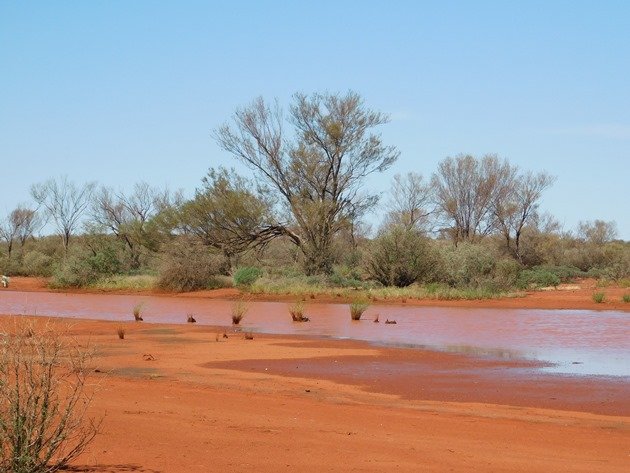
We went bush-walking down a dirt road near the Fortescue River last month to see what bird-life was about. It was windy and cool, so we wrapped up and walked down the road for a couple of hours. There were plenty of small family groups of White-winged Fairywrens and Purple-backed Fairywrens. We were not walking fast, because there were too many birds to enjoy. The vegetation is very low once you are away from the river and you could easily get lost if you didn’t stay on a track, because it all looks the same and there are no landmarks.
We suspected that there was a natural clay-pan nearby when we started to observe birds that rely on water to survive. White-plumed Honeyeaters, Willie Wagtails, Galahs, Crested Pigeons, Cockatiels, Australian Ringnecks, Diamond Doves and Peaceful Doves were becoming more prevalent indicating the presence of water. The first clay-pan we came to was dry, but had contained water until recently. A few hundred metres further down the track we found another clay-pan. There remained shallow water covering a wide expanse and that is where the birds were travelling to. The clay-pan was only a few metres from the edge of the dirt road. The “high tide” mark was still visible along the edge of the water.
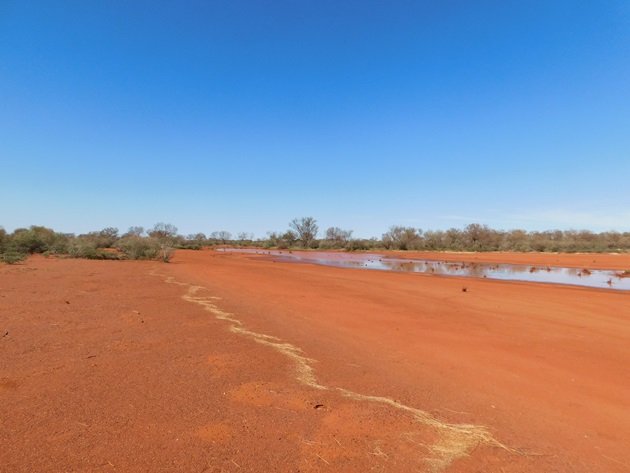
“High tide” line at the clay-pan
We followed the “high tide” mark along the edge of the clay-pan to see what was about. There didn’t appear to be any birds in or on the water. I then noticed there were actually some ducks tucked in against the tufts of vegetation. They were out of the wind and I asked Grant if he could see the two ducks. No! He could see them once I pointed them out and we moved slowly forward to see the pair of Pink-eared Ducks.
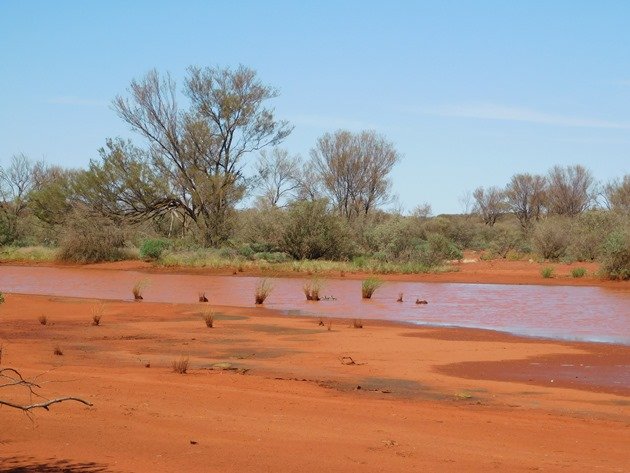
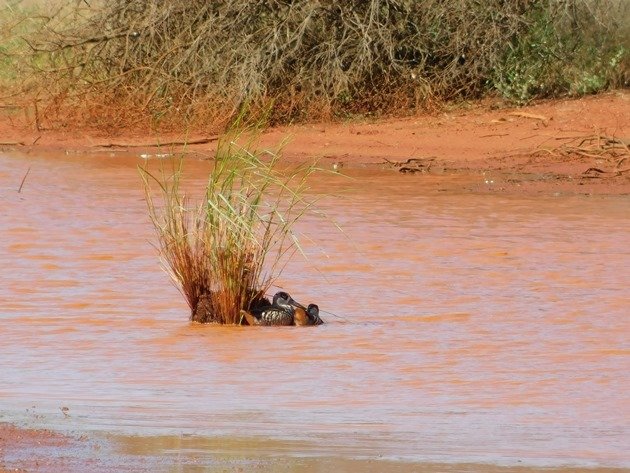
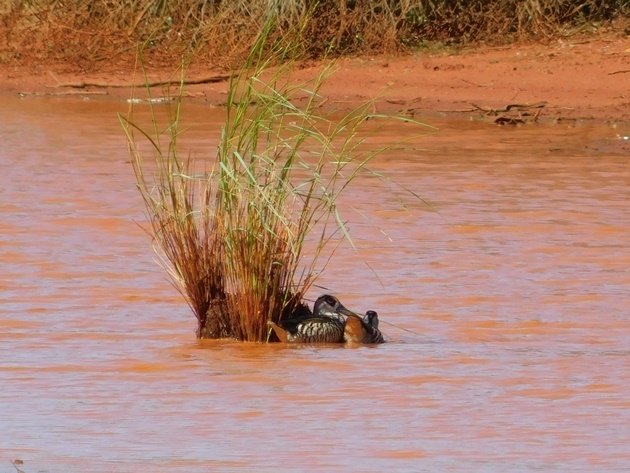
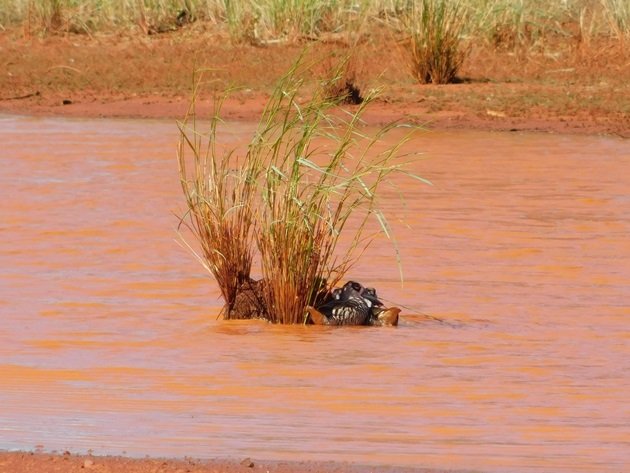
Pink-eared Ducks out of the wind
The two Pink-eared Ducks then floated out from near the vegetation and became three Pink-eared Ducks! It was hard to see that there could be anything there for them apart from shelter from the wind and a stopover on the way to somewhere else.
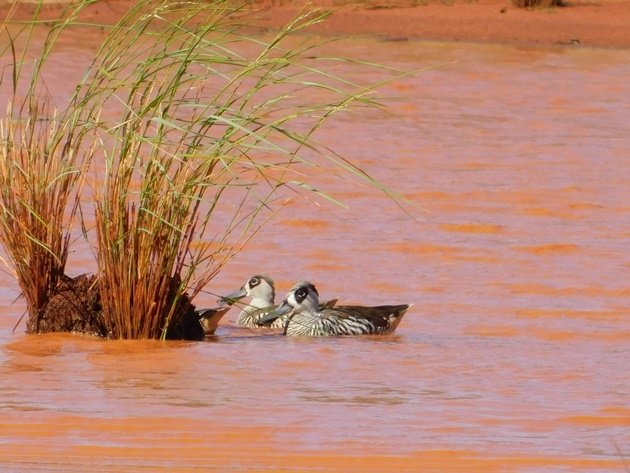
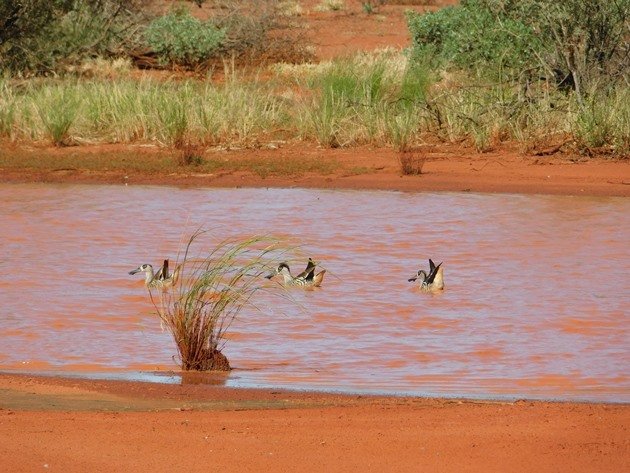
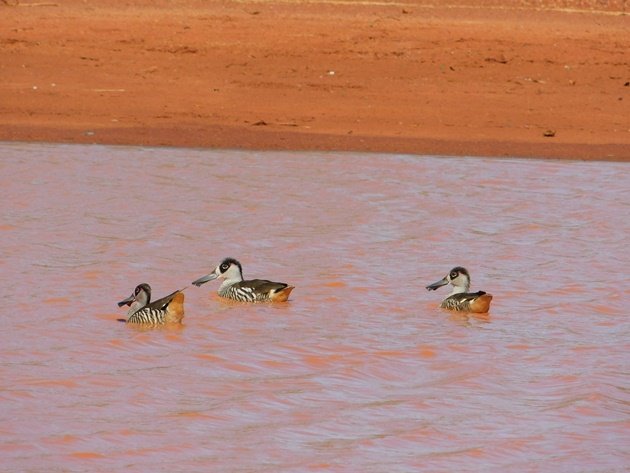
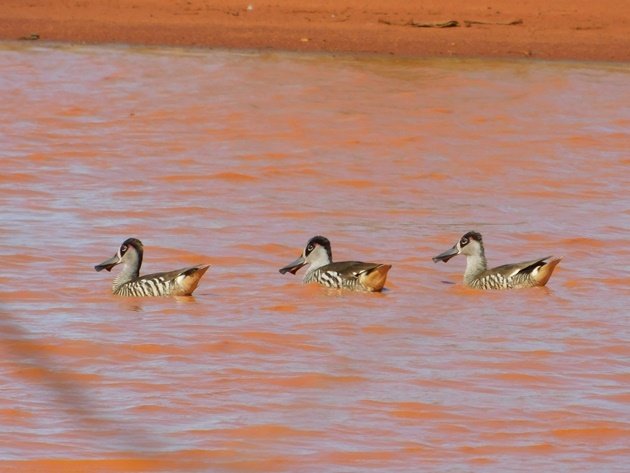
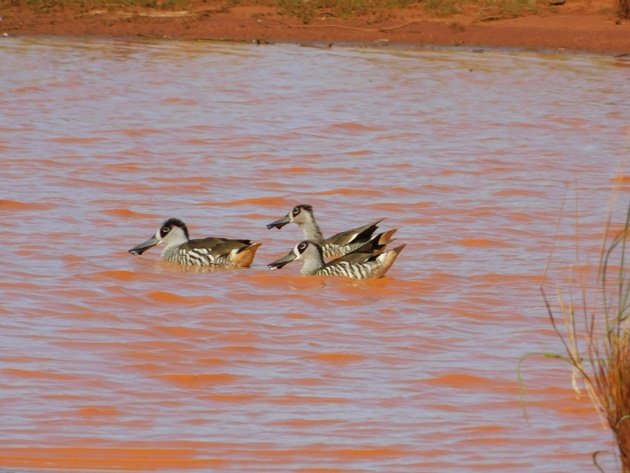
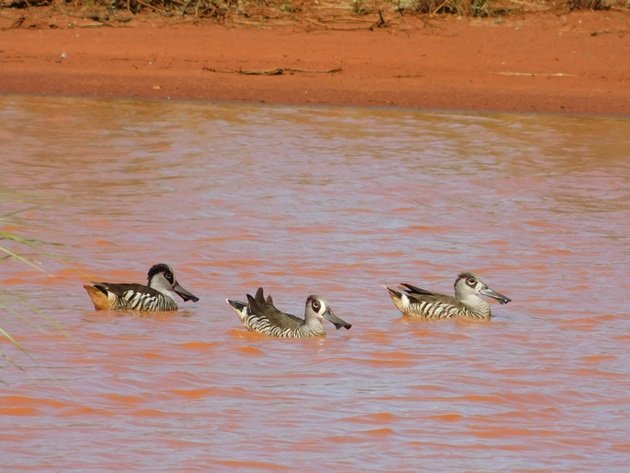
Pink-eared Ducks
After taking a few photographs we decided to not go around the clay-pan and disturb the Pink-eared Ducks any more. They got themselves back out of the wind.
There’s no doubt that at any time that you go bird-watching you are being watched. It is highly likely you don’t see a good number of birds that see you! You only have to be somewhere after dark to hear nocturnal birds very close by and realise that they have no doubt been keeping an eye on you for some time! Even in broad daylight you could easily overlook these Pink-eared Ducks or realise you had “under-counted” them! The joy of bird-watching!











I love ducks. These Pink-eared are really neat! Their huge long bills remind me of those found on Northern Shovelers. Looks like Australia is on my “places to visit” list. ?
Thanks, Roxanne! These are some of the prettiest ducks in my humble opinion!